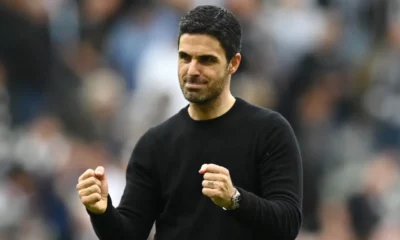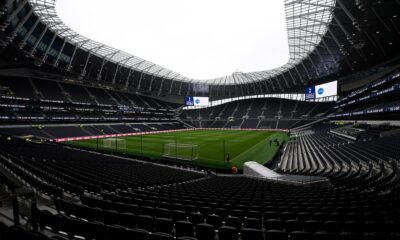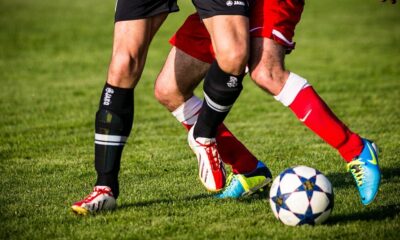Features
Getting Back on The Field: Steps to Accelerate Recovery from Football Injuries
Being an athlete is not easy, as you must spend time practising hard to improve your skills. But no matter how strong you are, you may sustain an injury,
Being an athlete is not easy, as you must spend time practising hard to improve your skills and develop endurance. But no matter how strong you are, at some point, you may sustain an injury, which is quite common in sports, including football. In fact, football has high rates of injuries, which is not surprising – because it is such an unpredictable sport, accidents occur quite frequently. A lot of times, accidents can be caused due to someone else’s negligence, and one of the best examples is a vehicle collision, which has devastating effects on victims’ lives.
Fortunately, victims of car accidents can claim compensation for the damage they suffered (more about this at https://www.accidentclaims.co.uk/personal-injury-compensation/car-accident-claims ), which helps them cope with the financial consequences. When it comes to sports, they are labelled as risky, so one wouldn’t immediately think that another person would be to blame for footballers’ injuries. However, a football pitch has a duty of care to ensure that the playing surface is safe and free of chemicals that could be dangerous for players. So, if an accident happens during the game and footballers are injured, they are entitled to claim compensation, too.
Obviously, this doesn’t mean footballers can’t sustain injuries without someone else being at fault. Trips, slips, and even a slight bump can lead to strained muscles and broken bones. Thus, it is crucial to understand how to speed up recovery from football injuries, so you can get back to the game as quickly as possible and continue doing what you’re passionate about.
Image source: https://unsplash.com/photos/gkwqwB0GtN0
Common football injuries
Head-related football injuries like concussions occur frequently and have debilitating effects on players. However, more than half of footballers’ injuries on the field affect their lower extremities. These include:
- Knee injuries, which happen often, as players must make rapid directional changes during the games. The most common knee injuries affect the meniscus, the medial collateral ligament, and the anterior cruciate ligament. When these injuries are severe, they require surgery. For the less serious ones, treatment generally involves heat/cold therapy, immobilising the joint, compression, and getting enough rest.
- Ankle injuries. The ankle has different small muscles, joints, and tissues that can easily be affected by an injury, especially when they support significant pressure and weight. So, a sudden change in direction when running can lead to inversion sprain, affecting ligaments and muscles and causing injuries ranging from sprains to severe fractures. Ankle injuries are generally treated with traditional RICE, while fractures require joint immobilisation or surgery.
- Sprains and strains affect players frequently, accounting for 2/3 of football injuries, generally occurring in the lower extremities. Fortunately, this injury is treated easily, with traditional RICE therapy playing a crucial role in recovery.
- Leg injuries. Footballers use their leg muscles a lot when playing, whether during the game or when they practise. So, it is not surprising that muscle strain and overuse happen pretty often, affecting hamstrings. When athletes make efforts to speed up when they are exhausted or not warmed up, the muscles can easily tear. Contusion (also known as a dead leg) is another injury affecting footballers and refers to deep muscle bleeding caused by a direct blow. Injuries to the hamstring muscles are generally treated with heat/cold therapy, while compression and ice therapy are prescribed for contusions.
Essential steps to heal from football injuries
You can take some preventive measures to avoid injuries, like strengthening and stretching joint muscles, thus promoting faster healing. But even if you do so, accidents on the field can still happen, and in that case, you must take your healing seriously – otherwise, your injury can worsen. While recovery may require a different approach depending on the type of injury, there are some essential steps to take to accelerate recovery. Let’s take a look at them below.
Don’t play through injuries
Unless you suffer a minor injury like a bruise or a cut, you should stop playing after having an accident on the playing field. Not doing so can lead to more severe damage; for example, running on a sprained ankle will only worsen the pressure, leading to increased damage and swelling. It’s too risky to do something like this only because you want to play for a bit longer, as a minor injury can turn into a serious one with lasting effects.
Seek professional help
After you get injured, you should get professional help as soon as possible. Even if you believe you have recognized the injury and know what to do next, that may not be the case. The truth is that only a trained professional can examine your injury and provide advice on what you should do to recover faster, helping you save a lot of stress and pain.
Give yourself time to rest
Damaged tissues can only heal if you don’t divert energy from the recovery process. Although it may be frustrating, it is essential to rest properly to get in the shape required to play again.
Eat healthily
A healthy diet is crucial for football players, allowing them to remain strong and be prepared for all the physical effort. And it’s just as important during the recovery process as your body needs vitamins and minerals for cell repair and to combat infection. Hence, include anti-inflammatory foods in your diet, such as green vegetables, fatty fish, nuts, and tomatoes, as they will make a difference in your recovery.
Get physical therapy
If you sustain a severe injury such as a broken bone or muscle tear, seeking physical therapy is paramount. They will create an action plan to help you recover as quickly as possible, recommend specific exercises, and monitor the healing process to see whether your condition is improving.
Last words
Football injuries are prevalent and can happen to any player, regardless of their ability level. So, knowing how to care for your body if you suffer an accident on the field is essential. Although suffering an injury can be truly distressing, healing is possible if you prioritise it through good nutrition, adequate rest, and following your doctor’s recommendations.




















